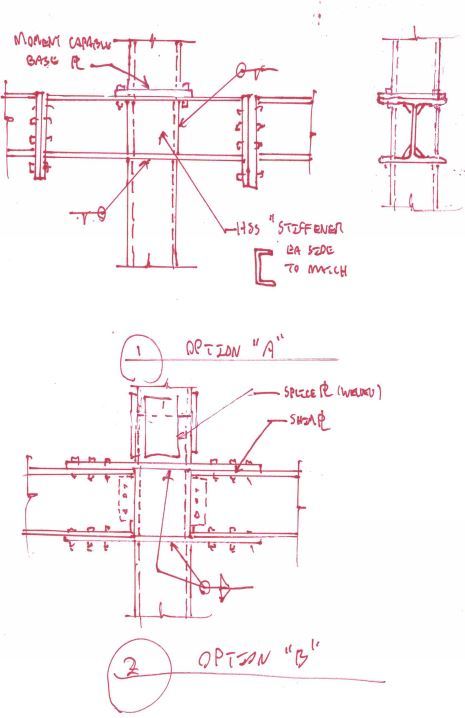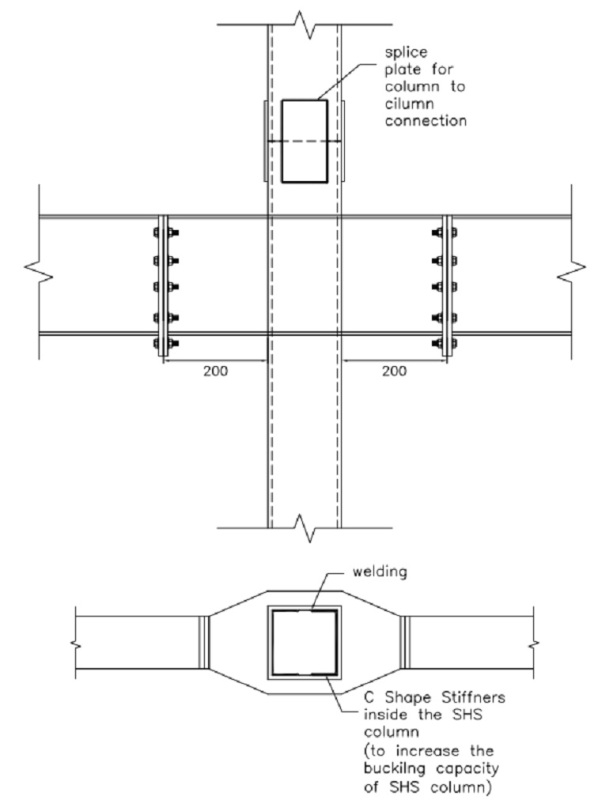I was typing as KootK posted on 9DEC15, 14:19, and when I saw his post I quit typing because he said essentially what I was going to say. But, it seems like this relatively clean detail went right over everyone’s head, in favor of more complicated details. Use your end pl. moment connection, but use a 2 or 3' long stub of a WF beam with wider flanges than the HSS width, but the same depth of the rest of the beam string. I don’t understand why you need six small triangular stiffeners on the end pl. on the stub, at the stub web, and then not on the longer beam at that same moment location. Explain. If you use a heavier WF stub which is 5, 6, or 7' long your moment will be lesser in demand. This WF stub is welded to the top of the lower column. The next column up has a moment capable base pl. bolted or welded to the top of the WF stub. Cut a length of the same HSS tube with such length that it fits btwn. the inside of the WF stub flanges vertically. Then rip this short section of HSS tube so that the two halves match the outside widths of the columns above and below, and fit into the WF stub web on both sides. In effect, you will rip out some HSS web material to match the WF stub web thickness. Clip the HSS webs to fit around the radius at the flg./web ‘k’ area’ on the WF stub, and don’t weld into these corners. The bottom column now forms a “T” and is all shop fab’ed. This gives you beam and column continuity with relatively clean detailing.


